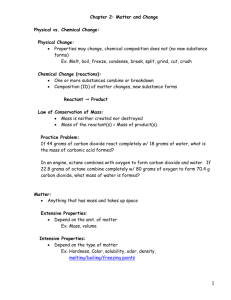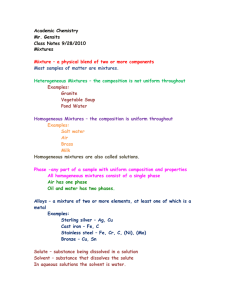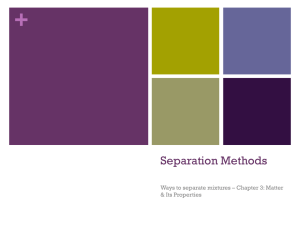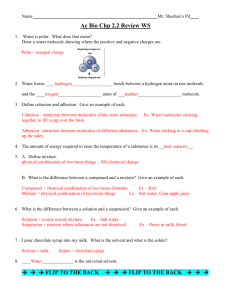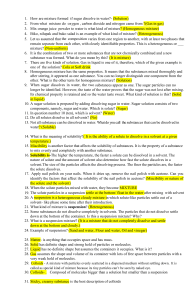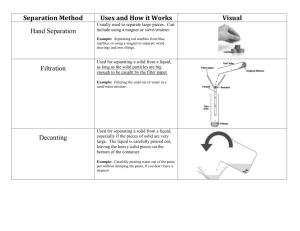Separating Mixtures
advertisement
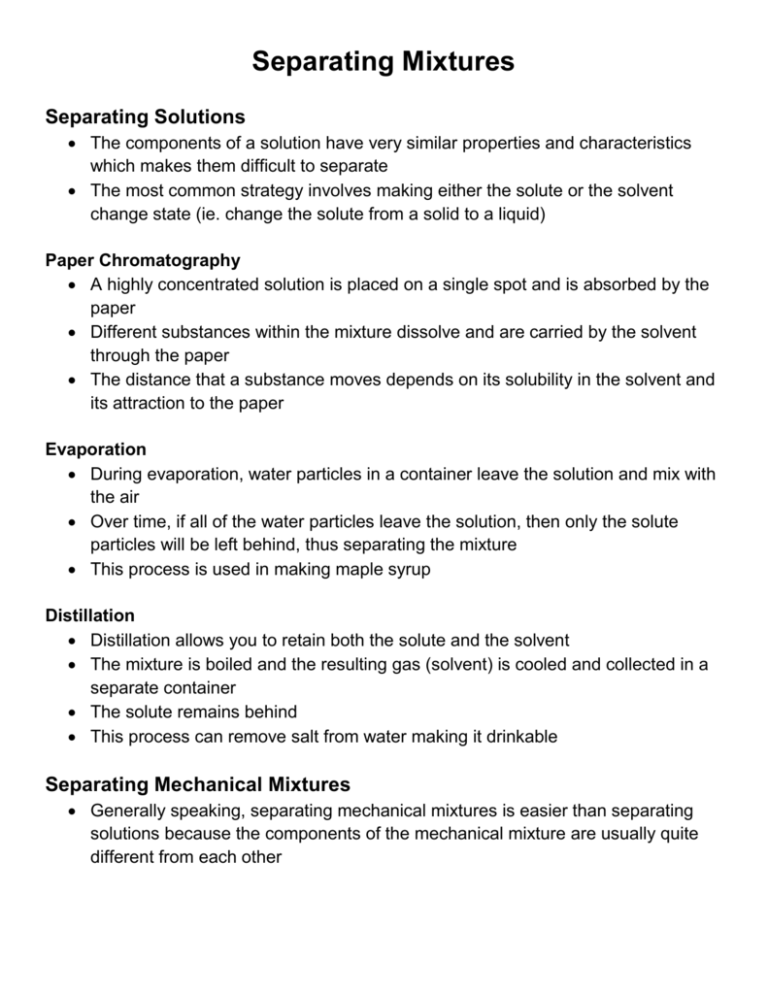
Separating Mixtures Separating Solutions The components of a solution have very similar properties and characteristics which makes them difficult to separate The most common strategy involves making either the solute or the solvent change state (ie. change the solute from a solid to a liquid) Paper Chromatography A highly concentrated solution is placed on a single spot and is absorbed by the paper Different substances within the mixture dissolve and are carried by the solvent through the paper The distance that a substance moves depends on its solubility in the solvent and its attraction to the paper Evaporation During evaporation, water particles in a container leave the solution and mix with the air Over time, if all of the water particles leave the solution, then only the solute particles will be left behind, thus separating the mixture This process is used in making maple syrup Distillation Distillation allows you to retain both the solute and the solvent The mixture is boiled and the resulting gas (solvent) is cooled and collected in a separate container The solute remains behind This process can remove salt from water making it drinkable Separating Mechanical Mixtures Generally speaking, separating mechanical mixtures is easier than separating solutions because the components of the mechanical mixture are usually quite different from each other Filtration Filtration is the mechanical process of separating solids from liquids or gases using a porous medium such as paper or sand When a mixture is poured into the filter, the solid parts become trapped in the filter, while the fluid passes through the filter A coffee maker and a furnace in your home both use filtration Sorting In some cases, the components of mechanical mixtures are easy to see and are easily identifiable Sorting is a technique that involves separating substances on the basis of appearance which may involve colour, size, texture or composition Blue box recycling programs require the driver of the recycling truck to sort the contents of the blue box into appropriate bins Sifting Sifting is a means of separating solids by component size It involves shaking a solid material while it passes through a screen or mesh Components of the solid materials that are small enough to pass through openings in the sifting device are separated from larger components that cannot fit through the same openings * sifting separates solids from other solids while filtration is used to separate solids from fluids Magnetism Some metals are magnetic because their component particles are attracted to the particles within magnets. (ex. Iron, steel, nickel) A magnet can be used to separate magnetic materials such as automobile parts made with iron from those materials that are not magnetic, such as plastic dashboards and rubber tires Question: You are given a mixture of chalk dust, larger pieces of chalk, paper clips and salt. Draw a well-labelled flowchart to explain how you would separate each substance in the mixture.
